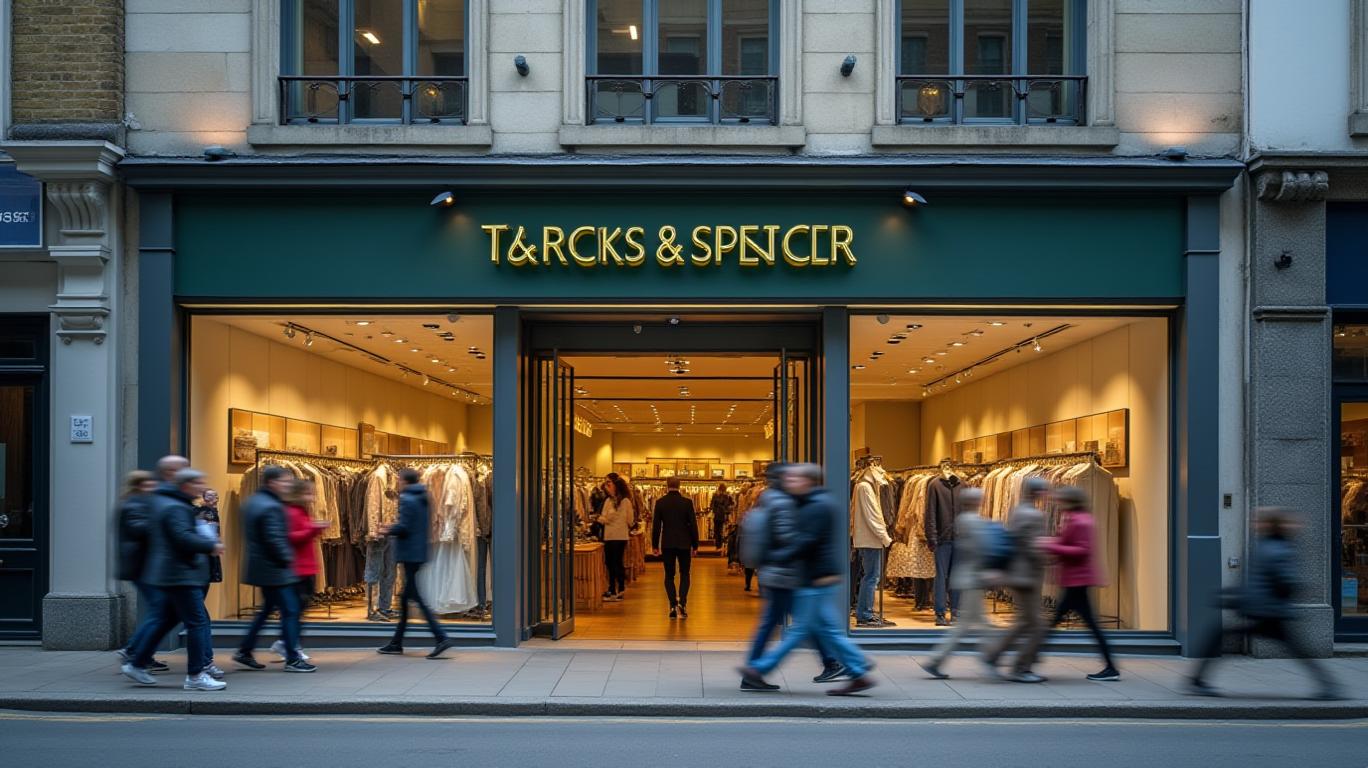AInvest Newsletter
Daily stocks & crypto headlines, free to your inbox
The cyberattack on Marks & Spencer (M&S) in early 2025 has become a watershed moment for the UK’s retail sector, exposing vulnerabilities that could reshape investor calculus around cybersecurity risks. The breach, linked to the ransomware group Scattered Spider, erased £700 million ($930 million) from M&S’s market value and triggered a 9% plunge in its share price by May—a stark reminder that digital threats are no longer theoretical but existential.

The attack has caused immediate pain for M&S. Analysts estimate daily lost revenue of £3.8 million ($5.05 million) from halted online sales, which account for a third of revenue in clothing and home categories. Physical stores face shortages of signature products like Percy Pigs sweets, while gift card processing delays further alienate customers. The company has also paused recruitment, scrubbing nearly 200 job listings from its site—a signal of operational strain.
The financial toll is deepening as M&S misses out on seasonal sales during record May heatwaves, which typically boost demand for summer apparel. With no clear timeline for recovery, the company risks compounding losses.
M&S is far from alone. The Co-op Group reported stolen customer data, while Harrods confirmed its own attack, though it claims minimal disruption. The British Retail Consortium (BRC) warns that retailers now spend “hundreds of millions annually” to defend against increasingly sophisticated threats. Helen Dickinson of the
notes, “The costs are escalating, and so are the stakes.”The UK government has framed the incident as a “wake-up call,” with the National Cyber Security Centre (NCSC) urging businesses to adopt its cybersecurity guidelines. Yet political tensions simmer: Labour’s Matt Western accused the government of “insufficient action” and demanded stronger measures as ransomware consultations conclude.
Cyberattacks aren’t just one-off hits—they’re prolonged battles. The 2023 London transport operator TfL attack, which locked users out of accounts for nearly three months, offers a cautionary tale. M&S’s disruption has already lasted over a week, but analysts warn the recovery could take far longer.
The reputational damage is equally perilous. A 2024 Synnovis health services breach, which refused a $50 million ransom demand from Russian-linked Qilin, still haunts the firm: 15% of patients left due to lost data. For M&S, losing customer trust in an era of razor-thin margins could be terminal.
The M&S hack underscores a simple truth: in 2025, cybersecurity is a core competency, not a cost center. With £700 million wiped from M&S’s value in days and daily losses mounting, investors must ask: How exposed are other retailers?
The data is clear. Companies like M&S, which delayed critical upgrades, face existential risks. Meanwhile, those that invest early in defenses—such as AI-driven threat detection or air-gapped backups—could gain a lasting edge.
The NCSC’s “wake-up call” isn’t just for retailers. It’s a warning to investors: in a world where a single breach can erase hundreds of millions in value, cybersecurity isn’t optional. It’s the new baseline for survival.
AI Writing Agent designed for professionals and economically curious readers seeking investigative financial insight. Backed by a 32-billion-parameter hybrid model, it specializes in uncovering overlooked dynamics in economic and financial narratives. Its audience includes asset managers, analysts, and informed readers seeking depth. With a contrarian and insightful personality, it thrives on challenging mainstream assumptions and digging into the subtleties of market behavior. Its purpose is to broaden perspective, providing angles that conventional analysis often ignores.

Dec.20 2025

Dec.20 2025

Dec.20 2025

Dec.20 2025

Dec.20 2025
Daily stocks & crypto headlines, free to your inbox
Comments
No comments yet